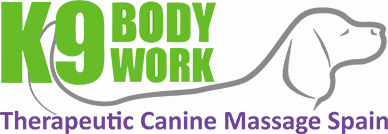Patella and the quads, no, not a funky band name, although they do work together.
The canine quadriceps muscle group plays a crucial role in the movement and stability of the canine knee joint. Comprising four muscles, the quadriceps femoris, commonly referred to as the quadriceps, is responsible for extending the knee and flexing the hip. In this blog, we will delve into the origins, insertions, and actions of each muscle in the canine quadriceps. Furthermore, we will explore the relationship between the quadriceps and the patella, as well as the potential consequences of tight quadriceps on patellar function.
The Quadriceps Muscles:
1. Rectus Femoris:
– Origin: Anterior inferior iliac spine.
– Insertion: Patella and tibial tuberosity via the patellar ligament.
– Action: Extends the knee joint and flexes the hip joint.
2. Vastus Lateralis:
– Origin: Greater trochanter and lateral lip of the linea aspera.
– Insertion: Patella and tibial tuberosity via the patellar ligament.
– Action: Extends the knee joint.
3. Vastus Medialis:
– Origin: Medial lip of the linea aspera and intertrochanteric line.
– Insertion: Patella and tibial tuberosity via the patellar ligament.
– Action: Extends the knee joint.
4. Vastus Intermedius:
– Origin: Anterior and lateral surfaces of the femur.
– Insertion: Patella and tibial tuberosity via the patellar ligament.
– Action: Extends the knee joint.
The patella, commonly known as the kneecap, is a sesamoid bone embedded within the quadriceps tendon. It acts as a fulcrum, improving the mechanical advantage of the quadriceps, allowing for more effective knee extension. The quadriceps muscles, through their tendons, surround and stabilize the patella during movement, preventing dislocation and ensuring proper tracking.
Tight quadriceps can exert excessive pressure on the patella, leading to various issues, including patellar malalignment and patellofemoral pain syndrome. When the quadriceps muscles are tight, they can pull the patella laterally, causing improper tracking and increased stress on the joint. This can result in pain, inflammation, and reduced range of motion.
To prevent and address tight quadriceps, regular massage and stretching exercises that target the quadriceps muscle group should be incorporated into a dog’s routine. This will help maintain the flexibility and balance of the quadriceps, reducing the risk of patellar problems.
